FORT BENNING.: Red light on your rifle? Don’t shoot. Green light? Fire at will. The Israeli-made Safe Shoot device is that simple — in theory. In field exercises here at Fort Benning, it proved a little trickier.
“It worked great until it fell off,” one US soldier, standing in the Georgia woods with his squadmates as they went over their last mock assault.
See, the version of Safe Shoot the soldiers tried attaches to your rifle barrel. There it calculates not only your precise position but the direction in which you’re aiming.
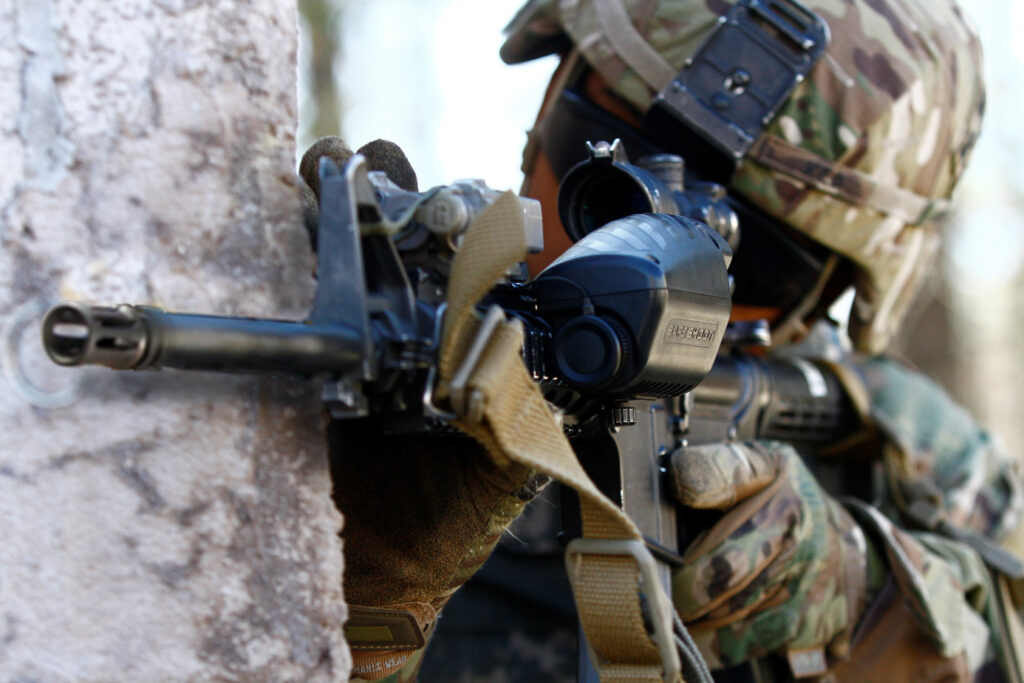
A soldier takes aim using the current, rifle-mounted version of the Safe Shoot device, which warns the user when they’re aiming at a friendly soldier.
All the devices in an area form a wireless network, sharing their positions and orientations. Then, if the software on your gun calculates you’re aiming dangerously close to another user – even if you can’t see them through (for example) foliage or walls – it displays a red warning light.
There’s also an optional warning buzzer, which you can turn down or off entirely if you’re trying to be stealthy.
Company representatives here emphasized that the device does not prevent the soldier’s from firing his weapon. The human being always has full control over whether or not to shoot. They also emphasized this is an early version, which they brought to the Army Expeditionary Warrior Experiment (AEWE) here, as well as to an earlier Marine Corps event in Quantico, to get feedback from real riflemen.
The feedback on the device was lively, unfiltered — and mixed.
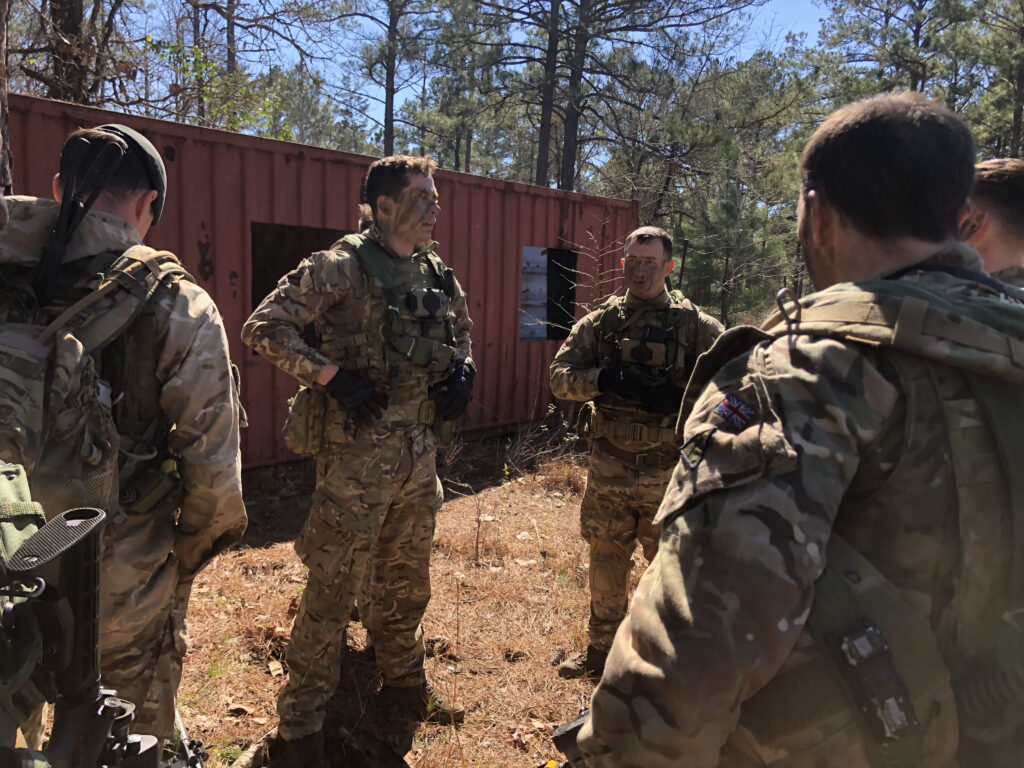
A British squad reviews its latest mock assault during the Army Expeditionary Warrior Exercise at Fort Benning.
“When I’m in contact, it’s the last thing on my mind,” scoffed a visiting British section leader. The warning light is nigh-impossible to see in daylight, even in the shady woods, he told the US Army NCOs and civilians gathering feedback. In any case, he added, in a small team, you should all know each others’ locations anyway, and you should never fire without positively identifying that the target in your sights truly is a hostile.
Maybe tanks could use it, he added. (Indeed, the Israelis offer a long-range version that goes on armored vehicles). Not infantry.
It’s too bulky, another UK soldier said. It gets in the way.
What if, one of the Americans asked, instead of a separate device you mounted on your rifle, the Safe Shoot function was built into your gunsight?
The British soldiers said that’d be much better.
What if friendly drones were added to the network, so the Safe Shoot device could tell you which ones not to shoot down?
Yes, the section leader said. That’d be useful.
Now, the UK participates in the AEWE exercise – and the US sends soldiers to the equivalent in the UK – precisely to give each Army an alternative point of view. It’s worth noting that the British Army prides itself on a tradition of marksmanship more than a century old, decades of experience in counterinsurgency from Iraq to Ireland, and, in many quarters, a disdain for American dependence on gadgetry.
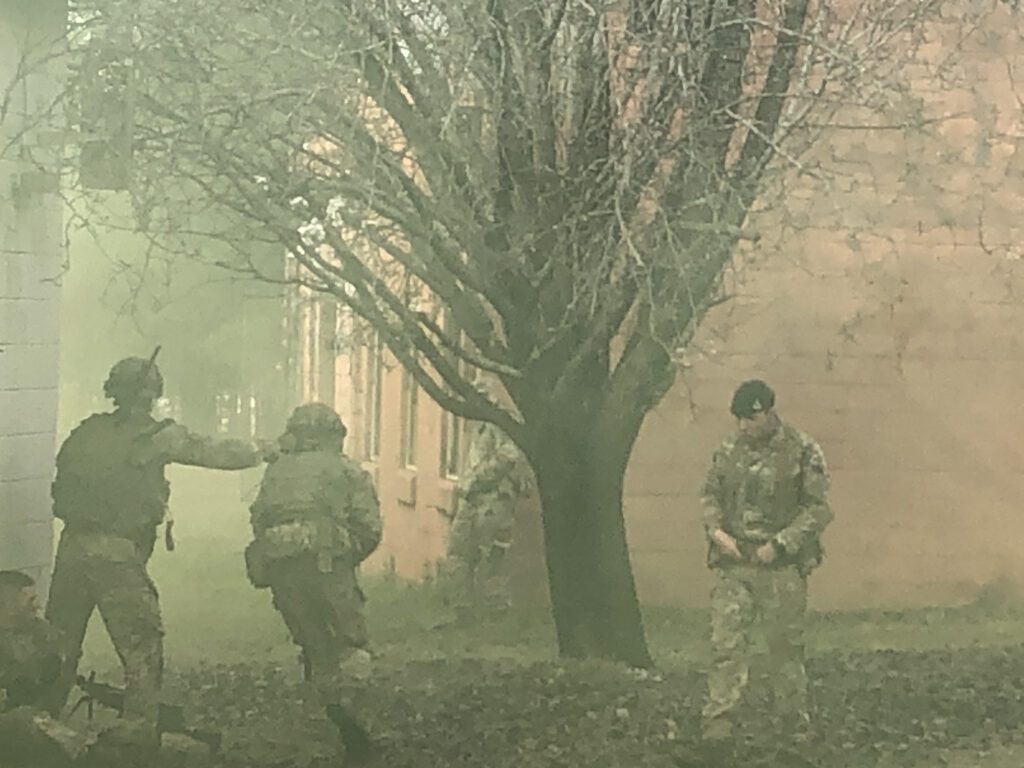
Troops practice assaulting a building under cover of smoke as an observer looks on.
US soldiers’ reactions were more enthusiastic. They, too, told the exercise observers they’d rather have Safe Shoot as a feature built into their existing gunsight rather than as a separate device: Getting it attached to rifles already festooned with scopes and rangefingers, and getting it to stay attached, were chronic problems. (Not everybody got the message, a company rep told me, that you have to mount it on the left side of your Picatinny Rail). And there weren’t enough to issue one to every soldier in the exercise. But even so, one American squad leader told me, he and his men definitely found it helpful to have this extra layer of protection against friendly-fire incidents.
That’s a topic the US military takes very seriously. After an American squad rushed a building occupied by “enemy” roleplayers, the air filled with green clouds from smoke grenades and the high-pitched whine of soldiers’ MILES gear – a kind of militarized laser tag – telling them they’d been shot. An observer-sergeant dissected the squad’s performance afterward. You had your SAW machinegunner in the wrong position, firing past your assault element, the sergeant said, and he didn’t have Safe Shoot. It’s entirely possible he shot some of you, not the enemy.
This problem is only going to get worse if we fight the Russians, one Fort Benning expert told me over the whine of MILES alarms: They’ve started using a camouflage pattern almost indistinguishable from ours.
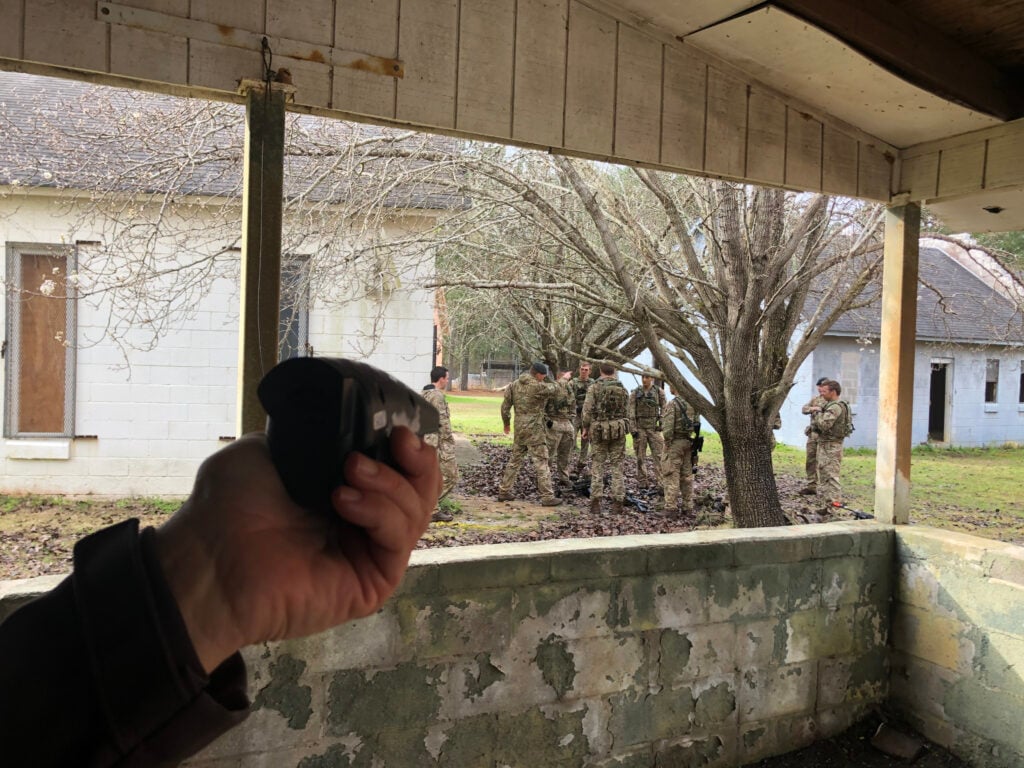
A company rep holds up the Safe Shoot device as soldiers prepare for an urban assault drill in the background.
Over 25 percent of soldiers killed or wounded in recent wars were hit by “friendly fire” by their own side, former IDF Brig. Gen. Amir Nadan told our Israeli correspondent, Arie Egozi. Nadan, who commanded elite paratroopers and units on the volatile northern border with Lebanon and Syria, is now Safe Shoots’ CEO.
The company offers versions of the underlying technology, called Green Shield, for ground vehicles, helicopters and drones, as well as infantry soldiers on foot, Nadan said. (There’s even a version being marketed to hunters in the US). That allows the whole force to form a network that alerts them when they’re accidentally aiming at one another. “Once the infantry, who are practically the most venerable elements, are identified,” he told Arie, “all the other units, weapon and forces will have to consider and refer to their position.”
The goal isn’t to slow operations down, but to speed them up without increasing the risk of friendly fire. “By eliminating the need to hesitate when making shoot/don’t shoot decisions, the Safe Shoot [device] offers greater freedom of operation,” Nadan said. “In general, knowing where your troops are significantly improves overall situational awareness, command flexibility and effectiveness.”
The company’s already working to miniaturize the system even further, its representatives at Fort Benning told me, showing me a sample of the next-gen system. That version splits the current rifle-mounted gadget into two smaller devices: a seven-ounce transponder worn on the soldier’s vest, which broadcasts his location; and a tiny gadget on the rifle barrel, weighing less than two ounces (50 grams), that determines exactly where your weapon is aiming.
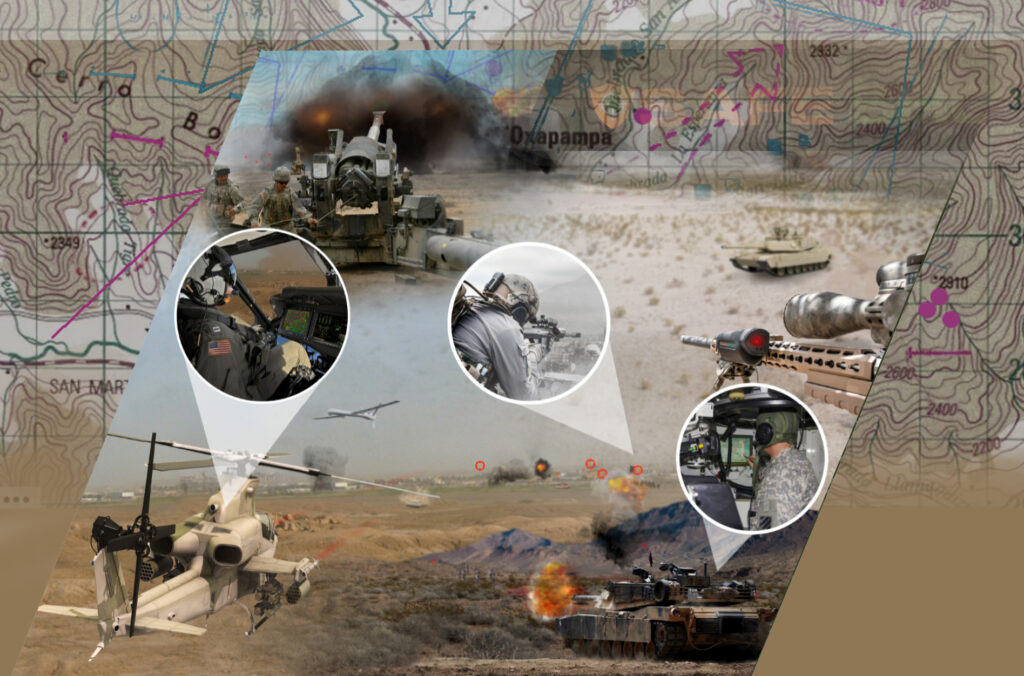
The Israeli company Safe Shoot offers friendly-fire prevention devices for infantry, ground vehicles, and aircraft. (Safe Shoot Ltd. graphic)
For now, the Safe Shoot reps acknowledged, their device does depend on GPS – or its Russian equivalent, GLONASS. That’s a major limitation, because the Global Positioning System signal can be blocked by enemy radio-frequency jamming or by physical obstacles. Here at Benning, for example, it didn’t work inside the reinforced-concrete buildings of the mock village, only in the woods.
But the company is working on pulling together data from a “wide range of sensors,” Nadan said, so future versions won’t rely on GPS. For the US version specifically, the goal is to integrate it with the current Nett Warrior network, the new FWS-I digital gunsight, the future Integrated Visual Augmentation System (IVAS) goggles, and an overarching Adaptative Squad Architecture now in development. That will eliminate the need for a separate gadget on the soldier’s rifle, they say, and allow the device to tap into all the new Assured Position, Navigation, & Timing (APNT) technologies the Army’s vigorously developing as alternatives to GPS.
Ultimately, one company rep told me, Safe Shoot won’t be a physical thing at all. It’ll be software, just one more app on the soldier’s standard-issue electronics.
Army eyes TBI monitoring, wearable tech for soldiers in high-risk billets
“We are also looking at what additional personal protective equipment we can provide to our folks, especially instructors and others who are routinely exposed to blast pressure,” said Army Secretary Christine Wormuth.


























